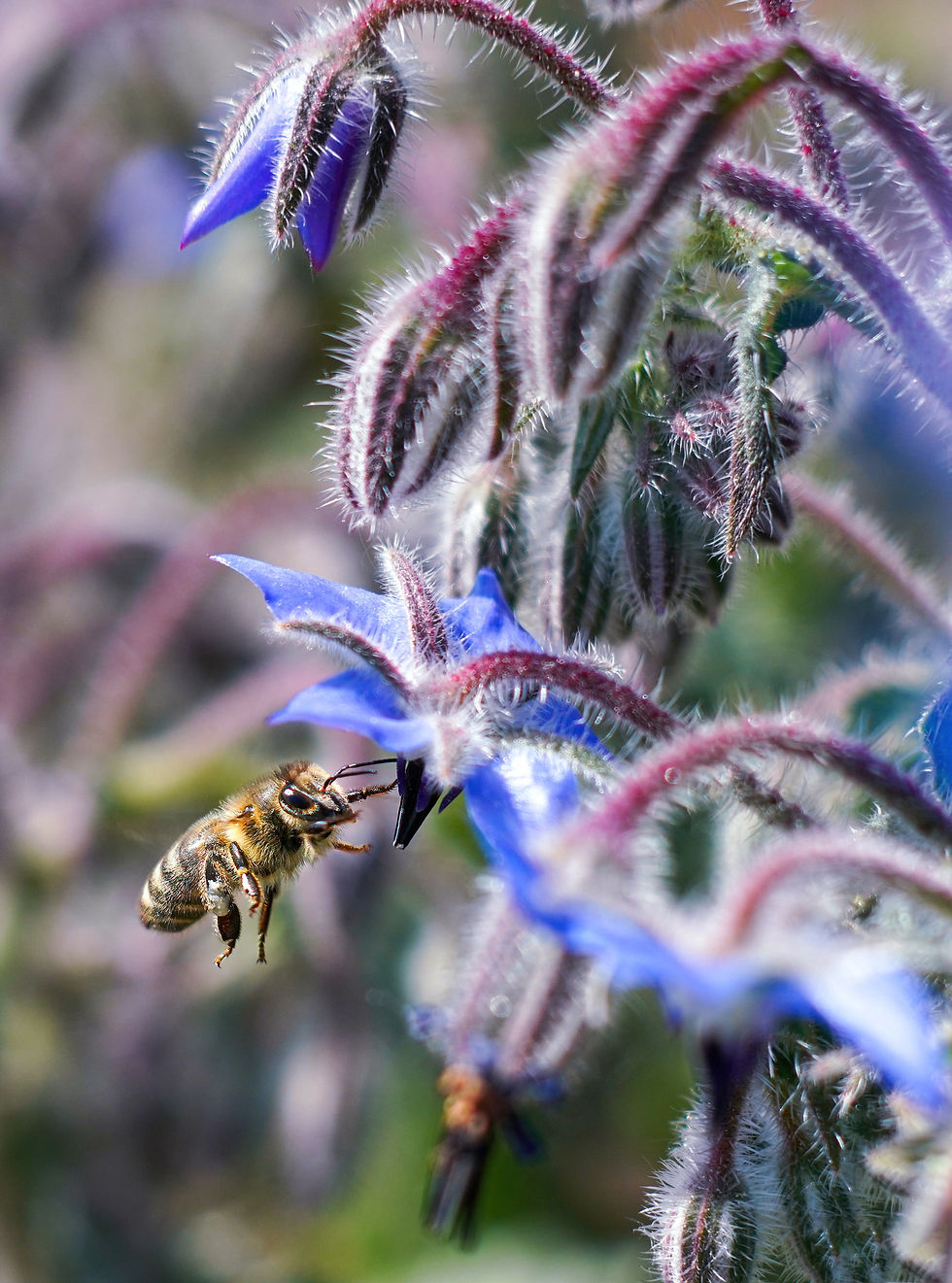Bee Buffet: Top Plants That Feed Your Hive All Year Long
- Milla Aseyev
- Apr 30
- 3 min read
Updated: May 10
Supporting our bees doesn't begin or end with weekly check-ups; it starts with planting an abundance of pollen and nectar in the form of flower and flowering trees. Whether you're a beekeeper or just a bee lover, one of the best things you can do is plant with purpose.
Bees don't just need flowers to survive — they need the right flowers. Some provide rich nectar for honey production, while others offer protein-dense pollen crucial for brood rearing and hive strength. Anyone can create a bee paradise right in their backyard with a few thoughtful choices. Below you fill find a list of the top plants that feed your hive all year long creating the ultimate bee buffet as well as a suggested seasonal bloom layout for zone 6b.
"To plant a garden is to believe in tomorrow — and to give bees a better today."
Pollen-rich plants are the hive's protein source. It feeds developing larvae and supports bee health. The best pollen-rich plants have high amino acid content and bloom at key times in the season. Having access to enough pollen in the spring decides the bees' fate after a long winter break.
-Top picks for high-quality pollen-
Maple Trees (Acer spp.)- One of the earliest spring pollen sources. Great for building up brood.
Willow (Salix spp.)- A spring favorite with abundant, nutritious pollen.
Dandelions (Taraxacum officinale)- Don't mow them down, and absolutely don't spray them with Roundup! They are an early food source with good-quality pollen.
Sunflowers (Helianthus spp.)- Packed with protein, and bees love them.
Goldenrod (Solidago spp.)- Late-season hero. Pollen-rich and supports fall brood rearing. Their nectar (honey) may not smell pleasant straight out of the hive, but it is perfect for the bees to overwinter with.
Borage (Borago officinalis)- Great pollen and long bloom time. An absolute must-have in the garden for more reasons than just bees.
Nectar is the carbohydrate source bees turn into honey — and not all flowers are created equal when it comes to volume or sugar content. When it comes to producing honey with great flavor, nectar-rich plants that bloom through the season should be the main focus.
-Top nectar sources for flavor and flow:-
Basswood/Linden Tree (Tilia spp.)- Delicate, floral honey with high nectar yields.
Black Locust (Robinia pseudoacacia)- Fragrant and prized for its light, delicious honey.
Clover (Trifolium spp.)- A classic. Produces sweet, mild honey and blooms over a long period.
Bee Balm (Monarda spp.)- Great midsummer nectar. Loved by all pollinators.
Lavender (Lavandula spp.)- Sweet, herbal nectar = delicious honey.
Mint (Mentha spp.)- A summer nectar source with a unique honey profile.
Thyme, Rosemary, and other herbs- Bees visit these frequently, and they're perfect for a kitchen garden.

If you have space for trees, they provide a lot of nectar and pollen in a compact area.
Tulip Poplar- Bees go crazy for it in spring. Gives dark, bold-flavored honey.
Black Locust- Has a short bloom window but incredible nectar.
Maple (especially Red and Silver)- Early pollen when little else is blooming.
Fruit Trees (apple, cherry, pear)- Provides both nectar and pollen while supporting pollination in your garden.

Seasonal Bloom Layout: Zone 6b
To really help your bees, aim to have something blooming from early spring to late fall. Here's a rough seasonal layout for zone 6a: (adjust as needed to meet your zone and local flora)
Early Spring: Willow, maple, crocus, dandelion
Spring to Early Summer: Fruit trees, clover, wildflowers
Summer: Bee balm, lavender, mint, sunflowers, black locust
Late Summer to Fall: Goldenrod, asters, sedum, joe-pye weed
Final Thoughts: Plant with Purpose
By planting a mix of trees, herbs, and flowers that bloom throughout the season, you'll give bees — and wild pollinators — a real shot at thriving. Healthier hives mean better pollination, stronger brood, and, yes… sweeter, richer honey.
Whether you're out in your backyard caring for your bees or just watching them buzz around, remember to make every single flower the bees visit a worthwhile visit. Each bloom is a tiny part of the big picture, helping to support these amazing pollinators and the environment we all share.
"Flowers are the music of the ground. From earth's lips, spoken without sound." -Edwin Curran



Comments